
The House of Keys is the directly elected lower house of Tynwald, the parliament of the Isle of Man, the other branch being the Legislative Council.

Castletown is a town in the Isle of Man, geographically within the historical parish of Malew but administered separately. Lying at the south of the island, it was the Manx capital until 1869. The centre of town is dominated by Castle Rushen, a well-preserved medieval castle, originally built for a Viking king.

Peel is a seaside town and small fishing port in the Isle of Man, in the historic parish of German but administered separately. Peel is the third largest town in the island after Douglas and Ramsey but the fourth largest settlement, as Onchan has the second largest population but is classified as a village. Until 2016 Peel was also a House of Keys constituency, electing one Member of the House of Keys (MHK), who, from September 2015, was Ray Harmer. Peel has a ruined castle on St Patrick's Isle, and a cathedral, seat of the Diocese of Sodor and Man.

Port Erin is a seaside village in the south-west of the Isle of Man, in the historic parish of Rushen. It was previously a seaside resort before the decline of the tourist trade. Administratively it is designated as a village district, with its own board of commissioners. The district covers around 1 square mile, and is adjacent to: Port St Mary to the south-east; the main part of Arbory and Rushen parish district to the north and east; the sea to the west; and an exclave of Arbory and Rushen parish district to the south. Following recent residential expansion, the settlement is now contiguous with that of Port St Mary, and on 18 July 2018 Tynwald authorised a public enquiry into the proposed expansion of the district boundary to include some of this expansion.

The Manx Labour Party is a political party on the Isle of Man that was founded in 1918.
St John's is a small village in the sheading of Glenfaba in the Isle of Man, in the island's central valley. It is in the House of Keys constituency of Glenfaba & Peel, which elects two MHKs.
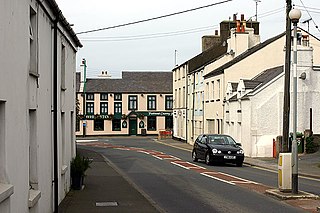
Ballasalla is a village in the parish of Malew in the south-east of the Isle of Man. The village is situated close to the Isle of Man Airport and 2 miles (3 km) north-east of the town of Castletown.
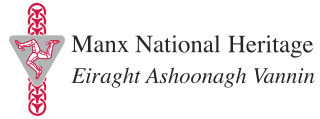
Manx National Heritage is the national heritage organisation for the Isle of Man. The organisation manages a significant proportion of the island’s physical heritage assets including over 3,000 acres of coastline and landscape. It holds property, archives, artwork, library and museum collections in trust for the Manx nation. It is the Isle of Man's statutory heritage agency and an Isle of Man registered charity (№ 603).
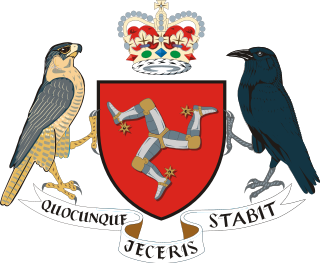
Noel Quayle Cringle OBE was President of Tynwald, the legislature of the Isle of Man, from 2000 to 2011.

Scouting on the Isle of Man is represented by the Scout Association of the United Kingdom. The Scout Association's Island Headquarters are at Cunningham House in Douglas. The association has its own campsite, Mullin ny Carty. Some of the Groups also have their own bunkhouses or campsites, in addition to their own headquarters.

Philip Anderson Gawne, better known as Phil Gawne, is a former Member of the House of Keys for Rushen, a constituency in the Isle of Man.
James Anthony Brown OBE is a Manx politician, former businessman and electrician who was the Chief Minister of the Isle of Man from 2006 until October 2011, when he stepped down from office following his decision to retire.
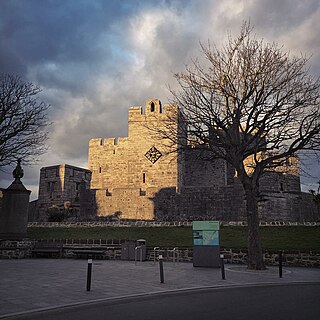
Castle Rushen is a medieval castle located in the Isle of Man's historic capital, Castletown, in the south of the island. It towers over the Market Square to the south-east and the harbour to the north-east. The castle is amongst the best examples of medieval castles in Europe and is still in use as a museum and educational centre.

The following outline is provided as an overview of and topical guide to the Isle of Man:
Francis Pigott Stainsby Conant was a British Whig politician who became the Lieutenant Governor of the Isle of Man from 22 October 1860 until his sudden death in 1863.
Richard Alexander Ronan is a former Manx politician, who was a Member of the House of Keys for Castletown from 2011 to 2016. He was minister for Environment, Food and Agriculture from 2014 until 2016.
This is a list of Registered Buildings and Conservation Areas of the Isle of Man. It includes buildings and structures in the Isle of Man designated by Isle of Man's Department of Environment, Food and Agriculture (DEFA) "as having special architectural or historical interest". Over 250 buildings and structures are listed, and 275 more have been identified as having potential for listing. It also lists the 21 Conservation Areas, historic districts" which protect "period"-type architecture, quality of building materials, relationships of enclosures and open spaces, and other aspects of the look and feel of historic buildings and areas.

George William Dumbell QC was a British advocate, businessman and philanthropist who was invited to become a Member of the House of Keys serving two different terms. He is also remembered on the Isle of Man as being involved in two banking ventures of questionable reputation; the Joint Stock Bank and Dumbell's Bank.
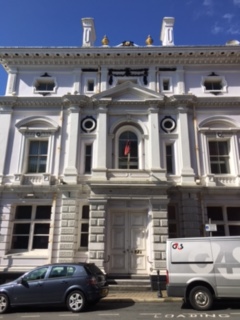
Dumbell's Bank was a bank in the Isle of Man. The bank's insolvency in 1900, known as Black Saturday and referred to in the Isle of Man as the Dumbell's Bank Crash, resulted in a run on the bank with many individuals losing their life savings and the ruin of numerous local businesses causing poverty, depression and bankruptcy. The effects were profound and lasted for a considerable number of years.
















